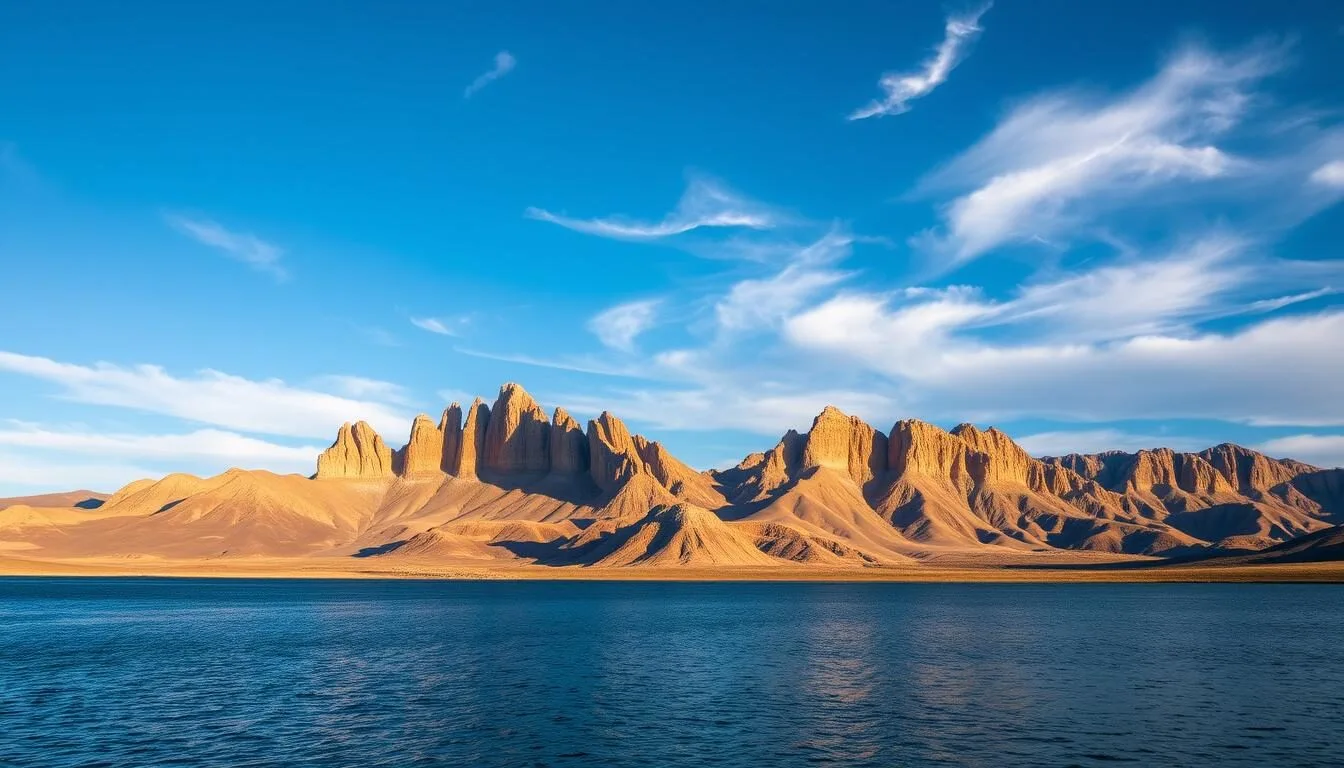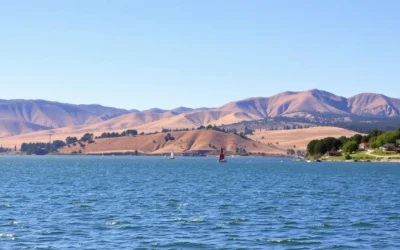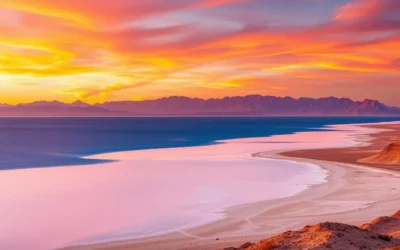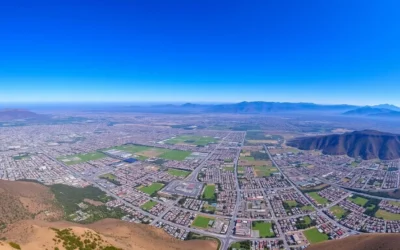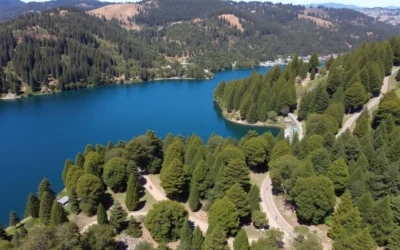✓ Accommodations ✓ Flights ✓ Rental Cars
Nestled in the Eastern Sierra region, Mono Basin is a hidden gem that often gets overlooked by travelers rushing to Yosemite National Park. Yet, this unique geological wonder is home to the million-year-old saline Mono Lake, a centerpiece that boasts otherworldly tufa formations, making visitors feel as if they’ve landed on the moon.
As you explore the area around Lee Vining, you’ll discover a plethora of activities, from hiking and bird watching to photography and water activities on the lake. The basin is a year-round destination, with the most accessible period being from May through October when Tioga Pass is open. Whether you’re looking for breathtaking views or exciting things to do, Mono Basin has something for everyone.
This article will guide you through the top attractions and activities, including the Tufa State Natural Reserve, scenic hiking trails, and nearby viewpoints, ensuring you’re well-prepared for your adventure with practical information on fees, directions, and visitor facilities.
Discovering the Unique Landscape of Mono Basin
As you approach Mono Basin, the striking landscape unfolds, revealing a million-year-old saline lake that defies initial impressions. Mono Lake, a vast body of water covering over 70 square miles, is a geological wonder that has fascinated scientists and visitors alike.
The Geological Wonder of Mono Lake
Mono Lake is not just any ordinary lake; it’s a saline lake with a salt concentration 2.5 times that of the ocean. This unique characteristic creates an ecosystem that is home to Alkali Flies and Brine Shrimp, making it a haven for specific wildlife. The lake’s water is a striking blue-green color that changes with the light and time of day, adding to its natural beauty.
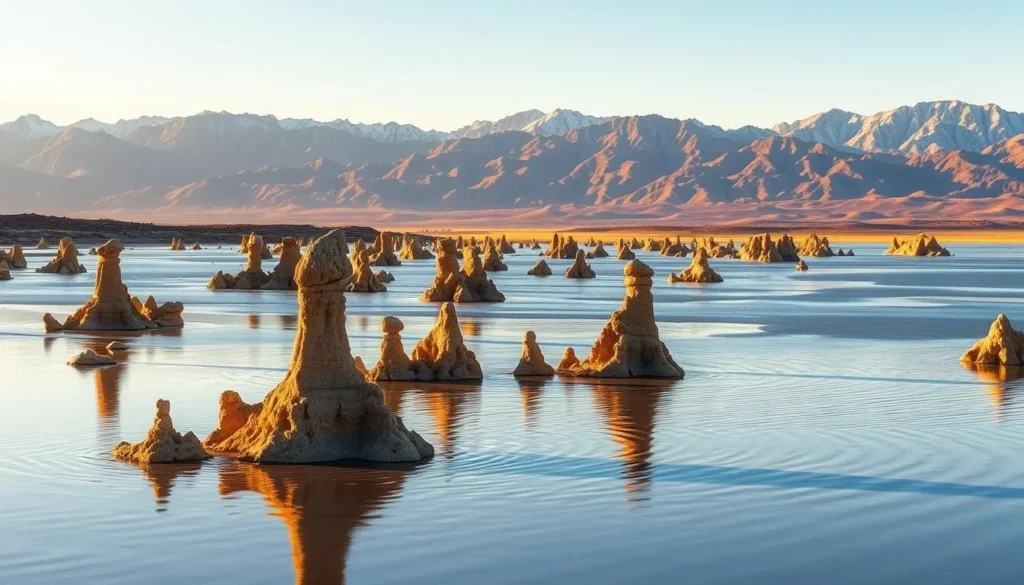
Understanding Tufa Formations
The tufa formations are a hallmark of Mono Lake’s landscape. These limestone structures form when calcium-rich freshwater springs mix with the carbonate-rich lake water. Over time, they can grow up to 30 feet tall when submerged but stop growing once exposed to air. This process has created a unique landscape that is both fascinating and fragile.
| Characteristics | Description |
|---|---|
| Location | Mono Basin, California |
| Size | Over 70 square miles |
| Salt Concentration | 2.5 times that of the ocean |
| Tufa Formations Height | Up to 30 feet |
Mono Lake Tufa State Natural Reserve
Established to protect the iconic tufa formations, the Mono Lake Tufa State Natural Reserve is a treasure trove of natural history. This reserve is a unique destination that offers insights into the geological and ecological wonders of Mono Lake.
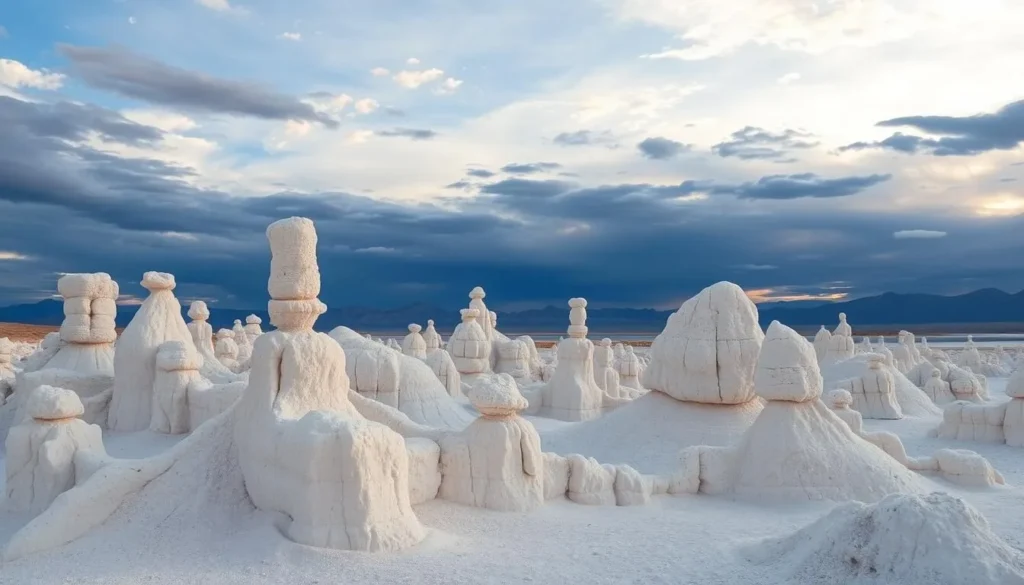
Getting to the Reserve
To reach the Mono Lake Tufa State Natural Reserve from Lee Vining, travel south on Highway 395 for a few miles and turn left onto Picnic Grounds Road. Just before reaching the campground, turn right onto Test Station Road, which turns to gravel. Continue straight on this road until you reach the parking lot on the left. Alternatively, you can take the Mono Lakes Basin Road, which is better maintained during winter.
Fees and Parking Information
The entrance fee to the reserve is $3.00 per person aged 16 and above, while children 15 and younger are free. The Interagency Pass is honored here, and it’s currently a cash-only, honor system payment method. The parking lot is spacious and can accommodate RVs, with restrooms located at the north end of the parking area.
The One-Mile Loop Trail Experience
The one-mile interpretive loop trail starts at the entrance and begins as a dirt path before transitioning to a wooden boardwalk. Along the trail, you’ll see the first major example of tufas on your left just before getting onto the boardwalk. The trail continues to the sandy shores where you can explore the tufa formations up close. Interpretive signs along the trail provide valuable information about the history of the area, the formation of tufas, and the unique ecosystem of Mono Lake.
The trail offers a unique and educational experience, allowing visitors to appreciate the natural beauty and significance of the Mono Lake Tufa State Natural Reserve.
Mono Basin Visitor Center: Your First Stop
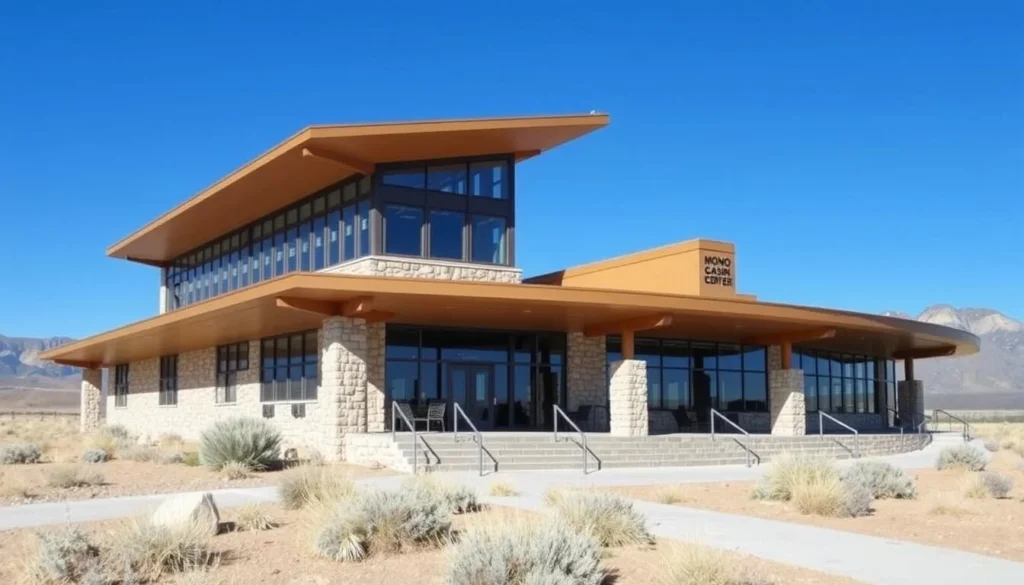
When visiting Mono Basin, your first stop should be the Mono Basin Visitor Center, a hub for education and preservation. This center is crucial for understanding the unique ecosystem of Mono Lake and the surrounding Mono Basin.
Exhibits and Educational Displays
The Visitor Center boasts an array of exhibits that guide you through the geological history of Mono Basin, the formation of tufa towers, the diverse wildlife, and the Native American history of the region. The main exhibit, located adjacent to the information desk, is a comprehensive resource that walks you through the development of Mono Lake’s tufa formations and the various species that call the lake home.
Additional features include a photography room, detailed displays about the region’s connection to Yosemite, an information desk, a viewing deck, a nature trail, and a gift shop. The “Secrets of Survival” nature trail, located behind the Visitor Center, offers a gentle, one-mile round-trip route that leads directly to the shore of Mono Lake.
Seasonal Hours and Location
The Visitor Center operates on seasonal hours: daily from 8am to 5pm in summer, Thursday to Monday from 8:30am to 4:40pm in spring and fall, and is closed during winter. Located at Lee Vining Creek Trail, Lee Vining, CA 93541, it’s easily accessible just off Highway 395 with clear signage, making it a convenient first stop for your visit.
Planning your visit according to the Visitor Center’s hours ensures you make the most of your time in Mono Basin.
Best Things to Do in Mono Basin, California: Top Picks
Mono Basin, California, is a haven for outdoor enthusiasts, offering a variety of activities to enjoy amidst its unique landscape. Whether you’re interested in water activities, wildlife, or simply taking in the breathtaking views, Mono Basin has something for everyone.
Kayaking on Mono Lake
Explore the serene waters of Mono Lake by kayak. While motorized watercraft are prohibited, human-powered vessels like kayaks are welcome. You can launch from Navy Beach or rent kayaks from outfitters like Caldera Kayak. Paddle through the calm waters and get up close to the striking tufa formations.
Bird Watching and Wildlife Photography
Mono Lake is a paradise for bird watchers and wildlife photographers. The lake attracts around 300 species of birds that feed on alkali flies and brine shrimp. With no fish in the lake, the birds use the tufas to nest, making for fascinating photography opportunities. Bring your camera to capture the diverse wildlife.
![]()
Swimming in the Alkaline Waters
If you’re feeling adventurous, take a dip in Mono Lake’s alkaline waters. However, be sure to avoid any cuts or sores on your body, and keep the water out of your eyes, as the lake’s salt concentration is 2.5 times that of the ocean.
Capturing Sunrise and Sunset Views
Mono Lake is renowned for its breathtaking sunrises and sunsets. Photographers from around the world come to capture the magical effects of the light on the tufa formations during these golden hours. Find a spot on the shore, set up your camera, and get ready to capture some unforgettable views.
| Activity | Description | Best Time |
|---|---|---|
| Kayaking | Explore Mono Lake’s calm waters and tufa formations | Morning or Afternoon |
| Bird Watching | Spot around 300 species of birds feeding on alkali flies and brine shrimp | Early Morning |
| Swimming | Take a dip in the alkaline waters (be cautious of salt concentration) | Afternoon |
| Photography | Capture the breathtaking views of tufa formations during sunrise and sunset | Sunrise or Sunset |
Must-Try Hiking Trails Around Mono Basin
With its unique geological formations, Mono Basin is a hiker’s paradise. The area offers a variety of trails that cater to different skill levels and interests, ensuring that every visitor can experience the natural beauty of this unique ecosystem.
South Tufa Beach Trail
The South Tufa Beach Trail is a short, family-friendly loop that offers spectacular views of the tufa formations. This trail is not only a visual treat but also provides an educational experience with its signage about the area’s ecological importance. When visiting, make sure to leave no trace to preserve these fragile formations for others to enjoy.

Panum Crater Trail
Just before the South Tufa area lies Panum Crater, accessible via a moderate hike that leads to the rim of this ancient volcanic crater. The hike is fun and rewarding, offering panoramic views of Mono Basin and the surrounding Sierra Nevada mountains. It’s an experience that combines adventure with breathtaking scenery.
Black Point Fissures Trail
The Black Point Fissures Trail offers a unique challenge as it involves hiking uphill through sand without a formal trail. This trail leads to what was once an underwater volcano that erupted about 13,000 years ago, now offering access to fascinating slot canyon-like fissures. The grand views of Mono Lake, Mono Valley, and the Sierra Nevada make the effort worthwhile.
Lee Vining Creek Trail
For a more accessible experience, the Lee Vining Creek Trail is a paved path that connects the Visitor Center to the edge of Mono Lake. This trail features interpretive signs and offers spectacular views, making it perfect for visitors of all ability levels. It’s a great way to learn about the area while enjoying the scenery.
When exploring these trails, remember to practice Leave No Trace principles, especially around the sensitive tufa formations. Bringing water, especially on more challenging trails like Black Point, is also advisable. Enjoy your hike in Mono Basin, and take in the breathtaking views that this unique area has to offer.
Best Viewpoints for Spectacular Mono Basin Vistas
Mono Basin’s diverse scenery can be appreciated from several exceptional viewpoints that offer unforgettable views. To make the most of your visit, it’s essential to know the best spots to capture the basin’s unique landscape.
Highway395 Scenic Viewpoint
One of the most panoramic views of Mono Basin can be enjoyed from the Highway395 Scenic Viewpoint. This elevated viewpoint offers a “from above” perspective of Mono Lake and its surroundings. To get to this viewpoint from Bridgeport, take Highway395 towards Lee Vining and look for the pullout on your right shortly after passing Virginia Lakes road. If you’re coming from Lee Vining, travel north on Highway395 and find the pullout on your left near the top of the ascent. This spot includes interpretive signs that provide insights into the basin’s geology and ecology.
South Tufa Shore at Sunrise and Sunset
For photographers, South Tufa Shore is a must-visit location, especially during sunrise and sunset. The tufa formations here are the largest and most unique, creating striking silhouettes against the colorful sky. A well-marked parking area with restrooms is available, making it convenient for early morning or evening shoots. Even on cloudless days, the soft pastel glow before and after blue hour transforms the landscape, making it a magical time to capture views of Mono Lake.
| Viewpoint | Best Time to Visit | Amenities |
|---|---|---|
| Highway395 Scenic Viewpoint | Anytime | Pullout with interpretive signs |
| South Tufa Shore | Sunrise and Sunset | Parking area with restrooms |
![]()
Nearby Attractions Worth Exploring
With its strategic location, Mono Basin serves as the perfect base for discovering the best of the Eastern Sierra. The area is surrounded by a variety of exciting attractions that are easily accessible by car.
Yosemite National Park – Eastern Entrance
A short drive up the Tioga Pass takes you from Mono Lake to Yosemite National Park’s eastern entrance, just 15 miles from Lee Vining. This less-crowded side of the park offers breathtaking scenery, but be sure to check for road closures before you go, as Tioga Pass is seasonal.
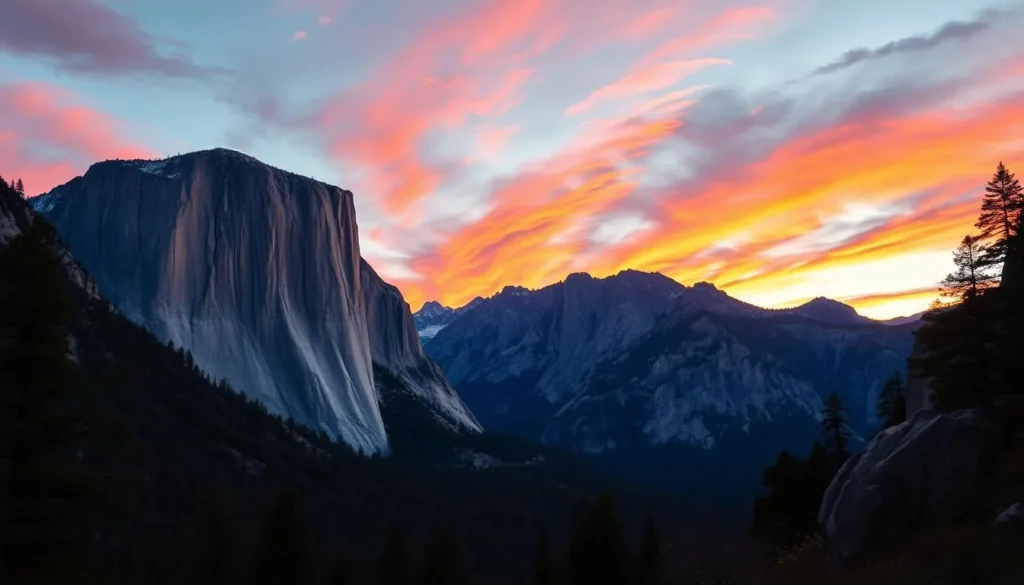
Bodie State Historic Park
Located 32 miles from Mono Lake, Bodie State Historic Park is one of America’s best-preserved ghost towns. During the summer months, Bodie stays open past sunset on three Saturdays, making it a great spot for astro-photographers. Be sure to check their website for reservation requirements.
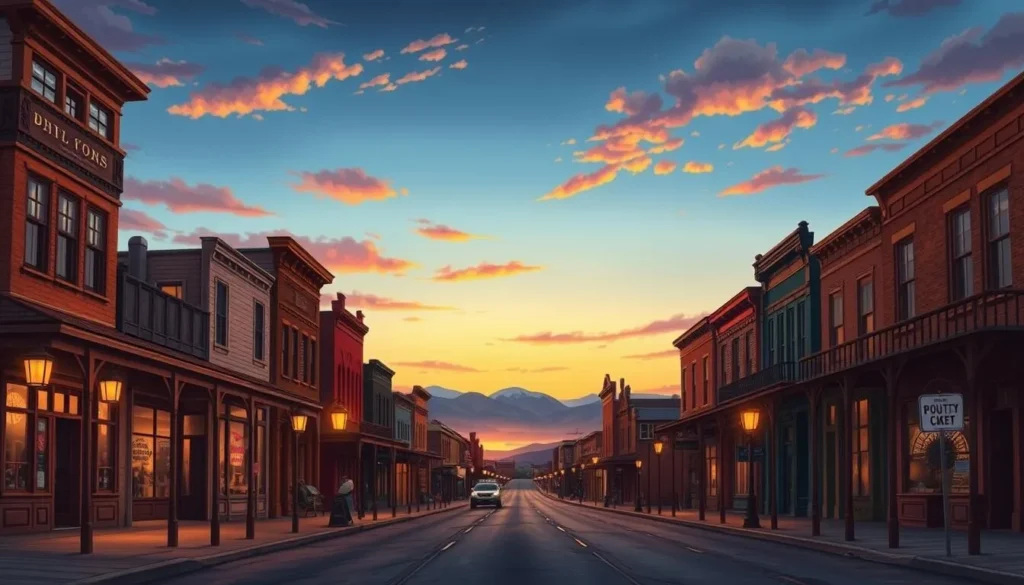
June Lake Loop Scenic Drive
Known as the “Swiss Alps of the Sierra,” the June Lake Loop Scenic Drive starts just a few miles down Highway 395. This stunning drive offers breathtaking views of alpine lakes and mountain scenery, with plenty of opportunities for recreation in all seasons.
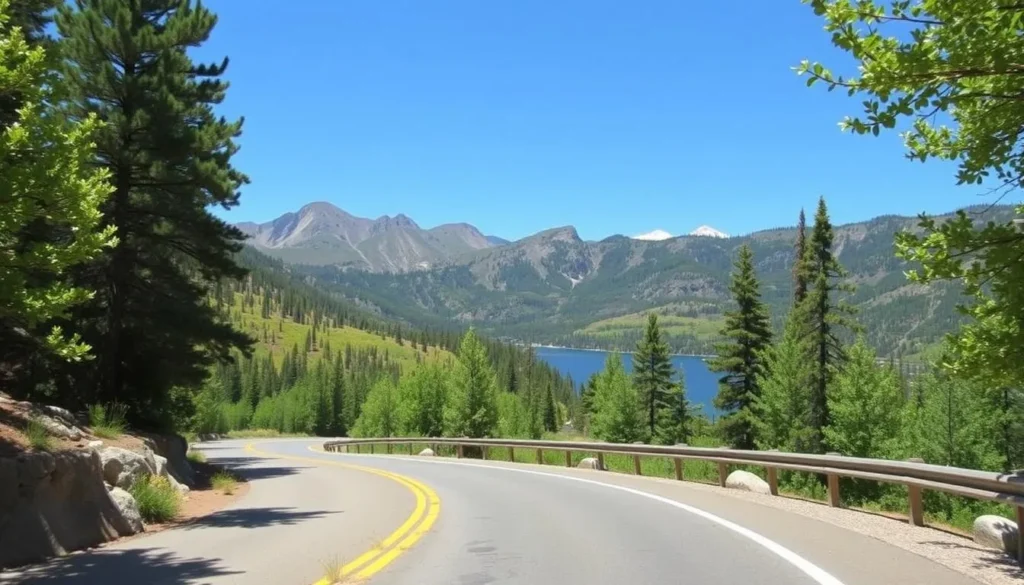
By incorporating these nearby attractions into your trip, you can experience the full range of what the Eastern Sierra has to offer. Whether you’re interested in exploring Yosemite, discovering a ghost town, or taking in the scenic views, Mono Basin is an ideal base for your adventure.
Conclusion: Planning Your Perfect Mono Basin Adventure
Nestled in the Eastern Sierra region, Mono Basin is a hidden gem waiting to be explored. With its unique landscape and diverse attractions, it’s a must-visit destination for any traveler. To make the most of your trip, plan to visit between May and October when Tioga Pass is open.
Spend at least 2-3 days to fully experience the area, exploring the Mono Lake Tufa State Natural Reserve, hiking the diverse trails, and taking in the spectacular viewpoints. Don’t forget to check out the Mono Basin Visitor Center for valuable insights and educational displays. For accommodations, consider staying in Lee Vining, the nearest town, and enjoy local dining options like Whoa Nellie Deli.
As you explore Mono Basin, remember to respect the fragile environment and pay the $3 fee for the Tufa State Natural Reserve. Use this as a gateway to further explore the Eastern Sierra region, including Yosemite National Park and the June Lake Loop. With careful planning, your Mono Basin adventure will be an unforgettable experience.
The above is subject to change.
Check back often to TRAVEL.COM for the latest travel tips and deals.
